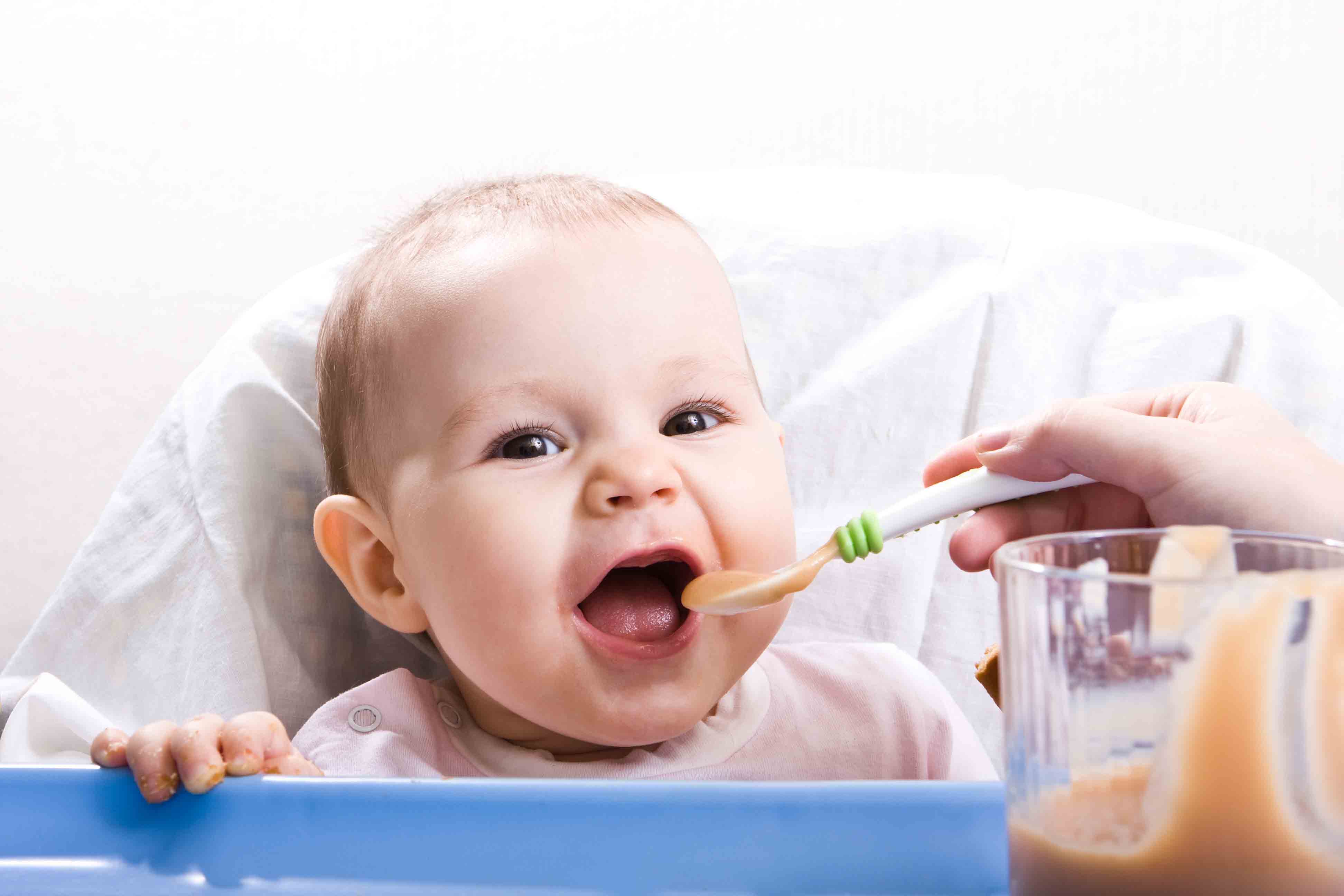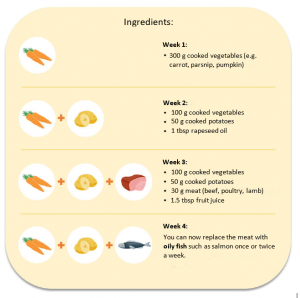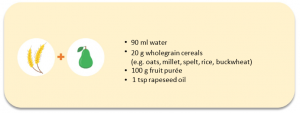
Ready for purée – how to introduce complementary foods
Breastfeeding is the best food for infants. Breast milk not only provides the baby with all of the important vitamins and nutrients but also protects against infections. However, the baby eventually needs more – their need for nutrients increases and can no longer be covered by milk alone. We will show you how to introduce your baby to solid food in 3 simple steps.
When is a baby ready for complementary foods?
Your baby should be given their first complementary foods at the beginning of the 5th month at the earliest and at the beginning of the 7th month at the latest. You then gradually replace their milk meals. The ideal time varies from child to child. In order to find out whether your baby is ready, you can pay attention to the following characteristics, for example:
· When the child is hungry, they open their mouth wide
· Child shows readiness for and interest in solid food
· Can sit upright or lean forward with help
· Can hold their head up without any problems

Should you prepare the purée yourself or buy it?
The supermarket has a large selection. Industrially produced baby food also saves time and effort. However, you should pay attention to the composition and ingredients of the baby food. It is important that there are no additives such as salt, flavourings or sweeteners. Spices and meat stock should also not be included in the purée. Preparing the food yourself, on the other hand, has some advantages: It is inexpensive and you can choose the ingredients yourself. In addition, you can accustom your baby to a greater variety of tastes than with ready-made products. The decision of whether to make it yourself or buy it is entirely up to you. Decide how it fits into your daily routine and to what extent it matches your attitude.
Introduction of complementary foods in 3 steps

Step 1: Puréed vegetables, potato and meat (from 5th-7th month)
Start with the vegetable purée from the 5th month to slowly accustom your baby to solid food. This purée should gradually replace the midday meal. At other mealtimes, continue to feed your baby with the breast or bottle if you are not breastfeeding.

Step 2: Baby cereal and milk (from 6th-8th month)
After you have introduced the first puréed food, another type of purée, baby cereal and milk, is added to the child’s diet around a month later. This should replace the evening meal in addition to the puréed vegetables, potato and meat at noon.
Experts recommend pasteurised and ultra-high temperature whole milk or UHT milk with 3.5% fat or baby formula.
Please note: You should not use raw milk as this could endanger your baby’s health. In addition, no sugar and no ingredients such as spices, nuts, chocolate or cocoa should be used.

Step 3: Baby cereal with puréed fruit (from 7th-9th month)
The third puréed dish is added to the diet approximately one month after the introduction of the baby cereal and milk. This now also replaces the afternoon meal. It is important to make sure that no milk or dairy products are added to the cereal mixture in order to achieve a balance with the other two protein-rich puréed meals and to promote iron intake. At this point at the latest, the baby also needs additional liquid with each puréed meal. Your child should drink 200 ml per day at the beginning of the complementary diet and around 400 ml per day towards the end of the first year. Drinking water or unsweetened herbal and fruit teas are suitable for this.

Remember: The right time to introduce complementary foods varies from child to child. It depends on various factors such as growth, development and the child’s willingness to separate from the breast or bottle. Give yourself and your baby time and feel your way slowly. You will then quickly notice what your child likes and dislikes.